Posted on August 15th, 2017 by Mary Lord
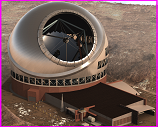 The clear skies above Hawaii’s Mauna Kea make the site ideal for a giant telescope. That’s assuming engineers can shield it from earthquakes, fierce winds, and extreme temperatures.
The clear skies above Hawaii’s Mauna Kea make the site ideal for a giant telescope. That’s assuming engineers can shield it from earthquakes, fierce winds, and extreme temperatures.
Read More
Filed under: Special Features | Comments Off on Location, Location, Location
Tags: ASEE Prism, Astronomy, big bang, Engineering, Hawaii, Mauna Kea Thirty Meter Telescope, NASA, stars, STEM education
Posted on August 14th, 2017 by Mary Lord
 Turn an empty cereal box into a pinhole projector or choose another DIY project for safely viewing the solar eclipse on August 21, 2017. Don’t forget to look around, too, as your shadow sharpens, the horizon colors with sunset hues, and birds roost!
Turn an empty cereal box into a pinhole projector or choose another DIY project for safely viewing the solar eclipse on August 21, 2017. Don’t forget to look around, too, as your shadow sharpens, the horizon colors with sunset hues, and birds roost!
Read More
Filed under: Class Activities, Grades 6-8, Grades 9-12, Grades K-5, K-12 Outreach Programs, Special Features, Web Resources | Comments Off on Build a Cereal Box Eclipse Viewer
Tags: Astronomy, camera obscura, cereal box, Class Activities, eclipse, informal science education, Lesson Plans, NASA, pinhole projector, STEM education, sun, viewer, Web Resources
Posted on August 14th, 2017 by Mary Lord
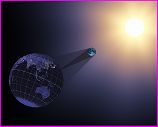 On August 21, 2017, all of North America will be treated to a solar eclipse, including a 90-mile swath of totality stretching from Oregon’s coast to Charleston, S.C. NASA has assembled a helpful guide for where, when, and how to experience the eclipse, including tips for safe viewing.
On August 21, 2017, all of North America will be treated to a solar eclipse, including a 90-mile swath of totality stretching from Oregon’s coast to Charleston, S.C. NASA has assembled a helpful guide for where, when, and how to experience the eclipse, including tips for safe viewing.
Read More
Filed under: Class Activities, K-12 Outreach Programs, Special Features, Web Resources | Comments Off on Eclipse 101: What, Where, How?
Tags: Astronomy, eclipse viewing, Geography, History, Internet Resources, maps, NASA, Outreach, Resources for Teachers, solar eclipse, totality, Web Resources
Posted on April 20th, 2017 by Mary Lord
 Is light pollution affecting health and the environment? The world’s first academic center dedicated to studying the quality of night skies hopes to find out. Learn about the dark-sky movement and find resources for “seizing the night” – including marking International Dark Sky Week on April 22 – 28, 2017.
Is light pollution affecting health and the environment? The world’s first academic center dedicated to studying the quality of night skies hopes to find out. Learn about the dark-sky movement and find resources for “seizing the night” – including marking International Dark Sky Week on April 22 – 28, 2017.
Read More
Filed under: K-12 Outreach Programs, Special Features, Web Resources | Comments Off on Carpe Noctem: Dark Sky Movement
Tags: Aerospace, Astronomy, dark sky association, Internet Resources, LED, Light pollution, NASA, night sky, NOAA, Teacher Resources, Web Resources
Posted on September 11th, 2011 by Jaimie Schock
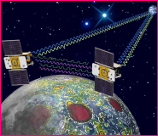 NASA’s Gravity Recovery and Interior Laboratory (GRAIL) mission will launch twin spacecraft in tandem orbits around the Moon to measure its gravity in unprecedented detail and create a gravitational map. GRAIL MoonKAM will allow classrooms to request pictures of the lunar surface from cameras on the twin satellites.
NASA’s Gravity Recovery and Interior Laboratory (GRAIL) mission will launch twin spacecraft in tandem orbits around the Moon to measure its gravity in unprecedented detail and create a gravitational map. GRAIL MoonKAM will allow classrooms to request pictures of the lunar surface from cameras on the twin satellites.
Read More
Filed under: For Teachers, K-12 Outreach Programs, Web Resources | Comments Off on Resource: Classroom on the Moon
Tags: Aerospace, Astronomy, Class Activities, NASA, Photo Gallery, Satellite, Satellite imagery, Satellites, Teacher Resources
Posted on August 30th, 2011 by Jaimie Schock
 NASA’s Jet Propulsion Laboratory recently announced the new Fall 2011 Cassini Scientist for a Day essay contest for students in grades 5-12. Winners are invited to a teleconference with Cassini scientists and engineers from the lab. The contest deadline is Oct. 26, 2011.
NASA’s Jet Propulsion Laboratory recently announced the new Fall 2011 Cassini Scientist for a Day essay contest for students in grades 5-12. Winners are invited to a teleconference with Cassini scientists and engineers from the lab. The contest deadline is Oct. 26, 2011.
Read More
Filed under: Grades 6-8, Grades 9-12, Grades K-5, K-12 Outreach Programs | Comments Off on Contest: Scientist for a Day
Tags: Astronomy, Competition, Competitions for Students, Contest, Contests, Essay Competition, NASA, Space
Posted on February 25th, 2011 by Mary Lord
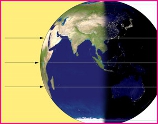 Since ancient times, seasons have played a powerful role in shaping human life. They affect what crops we grow, what customs we follow, even our moods. The science behind those changes in the day’s length, however, took centuries to unravel.
Since ancient times, seasons have played a powerful role in shaping human life. They affect what crops we grow, what customs we follow, even our moods. The science behind those changes in the day’s length, however, took centuries to unravel.
Read More
Filed under: Special Features | Comments Off on As The World Turns
Tags: Astronomy
Posted on January 9th, 2011 by ASEE
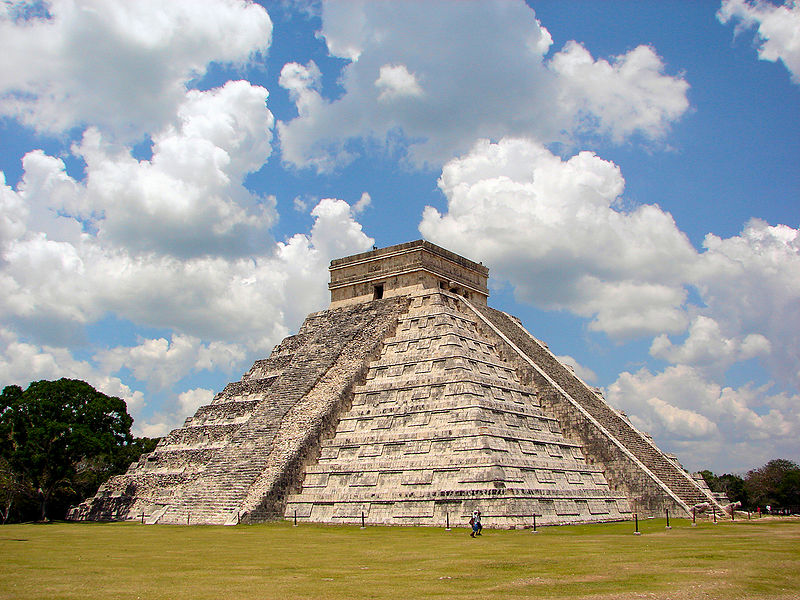 In this lesson combining math, engineering, and history, students in grades 6-12 learn about the ancient calendar system used by the Maya of Central America. Students construct a simple model of a calendar round, learning about prime numbers and the mechanics of these ancient devices.
In this lesson combining math, engineering, and history, students in grades 6-12 learn about the ancient calendar system used by the Maya of Central America. Students construct a simple model of a calendar round, learning about prime numbers and the mechanics of these ancient devices.
Read More
Filed under: Grades 6-8, Grades 9-12, Lesson Plans | 1 Comment »
Tags: Astronomy, Engineering in History, Grades 6-12, History, Mathematics
Posted on January 9th, 2011 by ASEE
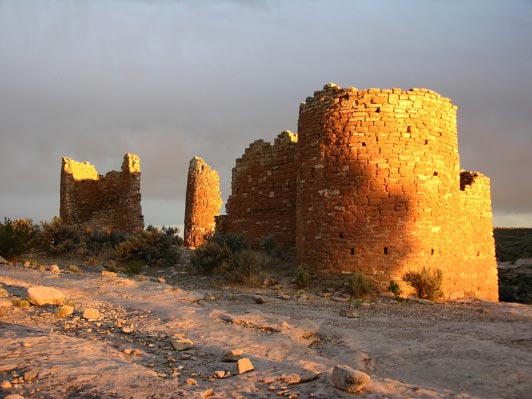 NASA’s Website Ancient Observatories, Timeless Knowledge contains a rich bank of material to help students, educators, and others explore the astronomical activities of pre-modern cultures. With separate sections for students and educators, the site contains lesson plans, web resources and links, interactive games, a timeline, and a photo gallery, as well as a showcase of Native Americans involved with NASA.
NASA’s Website Ancient Observatories, Timeless Knowledge contains a rich bank of material to help students, educators, and others explore the astronomical activities of pre-modern cultures. With separate sections for students and educators, the site contains lesson plans, web resources and links, interactive games, a timeline, and a photo gallery, as well as a showcase of Native Americans involved with NASA.
Read More
Filed under: Web Resources | Comments Off on Website: NASA’s Ancient Observatories
Tags: Astronomy, NASA, Native American
 The clear skies above Hawaii’s Mauna Kea make the site ideal for a giant telescope. That’s assuming engineers can shield it from earthquakes, fierce winds, and extreme temperatures.
The clear skies above Hawaii’s Mauna Kea make the site ideal for a giant telescope. That’s assuming engineers can shield it from earthquakes, fierce winds, and extreme temperatures.








 Turn an empty cereal box into a pinhole projector or choose another DIY project for safely viewing the solar eclipse on August 21, 2017. Don’t forget to look around, too, as your shadow sharpens, the horizon colors with sunset hues, and birds roost!
Turn an empty cereal box into a pinhole projector or choose another DIY project for safely viewing the solar eclipse on August 21, 2017. Don’t forget to look around, too, as your shadow sharpens, the horizon colors with sunset hues, and birds roost!  On August 21, 2017, all of North America will be treated to a solar eclipse, including a 90-mile swath of totality stretching from Oregon’s coast to Charleston, S.C. NASA has assembled a helpful guide for where, when, and how to experience the eclipse, including tips for safe viewing.
On August 21, 2017, all of North America will be treated to a solar eclipse, including a 90-mile swath of totality stretching from Oregon’s coast to Charleston, S.C. NASA has assembled a helpful guide for where, when, and how to experience the eclipse, including tips for safe viewing. Is light pollution affecting health and the environment? The world’s first academic center dedicated to studying the quality of night skies hopes to find out. Learn about the dark-sky movement and find resources for “seizing the night” – including marking International Dark Sky Week on April 22 – 28, 2017.
Is light pollution affecting health and the environment? The world’s first academic center dedicated to studying the quality of night skies hopes to find out. Learn about the dark-sky movement and find resources for “seizing the night” – including marking International Dark Sky Week on April 22 – 28, 2017.  NASA’s Gravity Recovery and Interior Laboratory (GRAIL) mission will launch twin spacecraft in tandem orbits around the Moon to measure its gravity in unprecedented detail and create a gravitational map. GRAIL MoonKAM will allow classrooms to request pictures of the lunar surface from cameras on the twin satellites.
NASA’s Gravity Recovery and Interior Laboratory (GRAIL) mission will launch twin spacecraft in tandem orbits around the Moon to measure its gravity in unprecedented detail and create a gravitational map. GRAIL MoonKAM will allow classrooms to request pictures of the lunar surface from cameras on the twin satellites.  NASA’s Jet Propulsion Laboratory recently announced the new Fall 2011 Cassini Scientist for a Day essay contest for students in grades 5-12. Winners are invited to a teleconference with Cassini scientists and engineers from the lab. The contest deadline is Oct. 26, 2011.
NASA’s Jet Propulsion Laboratory recently announced the new Fall 2011 Cassini Scientist for a Day essay contest for students in grades 5-12. Winners are invited to a teleconference with Cassini scientists and engineers from the lab. The contest deadline is Oct. 26, 2011. Since ancient times, seasons have played a powerful role in shaping human life. They affect what crops we grow, what customs we follow, even our moods. The science behind those changes in the day’s length, however, took centuries to unravel.
Since ancient times, seasons have played a powerful role in shaping human life. They affect what crops we grow, what customs we follow, even our moods. The science behind those changes in the day’s length, however, took centuries to unravel. NASA’s Website Ancient Observatories, Timeless Knowledge contains a rich bank of material to help students, educators, and others explore the astronomical activities of pre-modern cultures. With separate sections for students and educators, the site contains lesson plans, web resources and links, interactive games, a timeline, and a photo gallery, as well as a showcase of Native Americans involved with NASA.
NASA’s Website Ancient Observatories, Timeless Knowledge contains a rich bank of material to help students, educators, and others explore the astronomical activities of pre-modern cultures. With separate sections for students and educators, the site contains lesson plans, web resources and links, interactive games, a timeline, and a photo gallery, as well as a showcase of Native Americans involved with NASA.